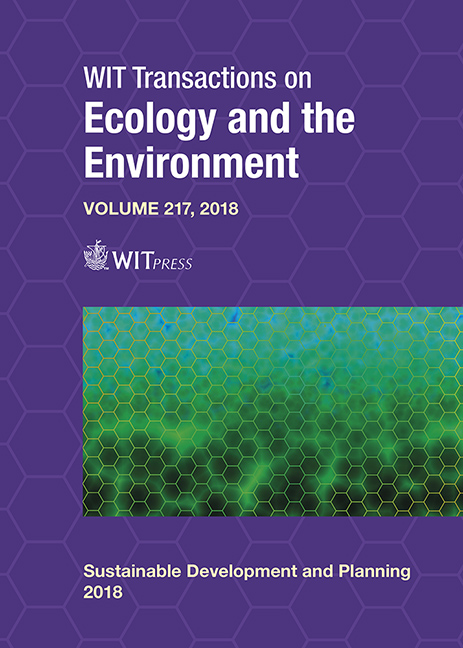CRADLE TO CRADLE REGENERATIVE DESIGN: FROM CIRCULAR ECONOMY TO SUSTAINABLE CONSTRUCTION
Price
Free (open access)
Transaction
Volume
217
Pages
12
Page Range
3 - 14
Published
2018
Size
930 kb
Paper DOI
10.2495/SDP180011
Copyright
WIT Press
Author(s)
ALEXANDROS KITRINIARIS
Abstract
It is estimated that the world’s population will reach 9.7 billion by 2050. The population growth is leading to an increased production of goods and the multiplication of waste, while simultaneously depleting the earth’s resources. The purpose of this paper is to show that the only solution to combine production efficiency with a healthier environment is to adopt cradle to cradle regenerative design processes by using renewable energy sources. The increasing global production of sewage sludge from wastewater treatment plants has raised critical questions regarding the most efficient environmental and economic methods of managing the final product. Europe produces an average of 13 million tonnes of sludge dry solids annually. It is estimated that approximately 1.7 million tonnes of Sewage Sludge Ash are produced annually world-wide and this is likely to increase in the future. SSA can be used as a raw material in the construction field. To this end, we are attempting to present our internationally awarded project “Earthwood”, which adopts cradle to cradle regenerative design processes as it uses renewable energy sources including sewage sludge produced by Wastewater Treatment Plants, lightweight aggregates and cement or lime generated by cement factories and structural timber fabricated by wood industries. “Earthwood” integrates sustainable construction technology with traditional building design methods. It can be constructed in a limited timetable, i.e. 2–4 days; is self-sufficient through solar energy and sound water management; is composed of recyclable construction materials including sewage sludge ash stabilized rammed earth and structural cross laminated timber, while simultaneously promoting social responsibility and economic viability, improving living conditions, minimizing its ecological footprint and ensuring an enduring positive impact on communities and on the environment.
Keywords
sustainability and the built environment, environmental management, resources management, waste management, sewage sludge, cradle to cradle, circular economy, rammed earth, cross laminated timber, recyclability and ecological awareness





